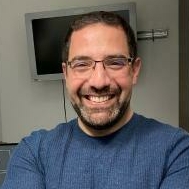Preventing future blindness by identifying ‘at-risk’ children
Inspired to prevent loss of sight
Dr Vaghefi’s father lost his eyesight when he was only four years old, due to undiagnosed congenital glaucoma. Growing up with a blind father, and in a circle of families with a blind parent or child, Dr Vaghefi was inspired to develop technologies that will prevent unnecessary eyesight loss.
Short-sightedness can lead to preventable blindness in children
Despite enormous technological advances, 80% of global blindness is preventable. The onset and rapid progression of myopia (short-sightedness) in childhood can cause irreversible blindness.
The incidence of myopia among New Zealand children is estimated at 20% and is expected to reach ‘epidemic’ levels by 2050. Vision loss can be prevented if ‘at-risk’ children are identified early and myopia control interventions are started.
Current screening lacks precision
In New Zealand, the B4 School and Year 7 Vision Screening programmes are the primary points for identifying myopic children. However, with these pathways clinicians can’t reliably identify at-risk children. This leads to a blanket treatment approach, which causes both under-treatment and over-treatment.
Dr Vaghefi and his team are developing a solution for children
A team of ophthalmologists, optometrists and bioengineers from The University of Auckland, ADHB and CMDHB have developed and patented imaging technologies for accurate measurements of eye anatomy and physiology.
They plan to adopt and combine these technologies in a single platform suitable for screening children. This will enable accurate and inexpensive identification of children at risk of blindness, disease progression monitoring and more precise myopia control.
Proudly supported by Cure Kids
By funding this much-needed innovation, Cure Kids is helping to reduce preventable blindness in children.

Help fund our big research.
Every bit helps.

